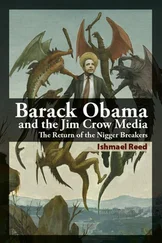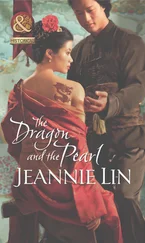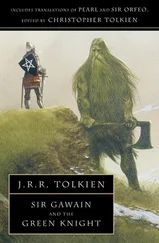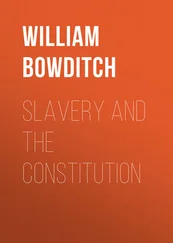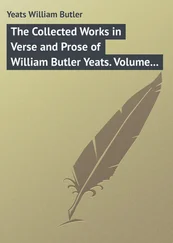William Ervin Keener
PEARL AND THE NIGGER
This story is dedicated to my daughters, Gail and Cathy!
A special thanks to my wife, Kaye, and my son, Doug, for their many hours spent at the computer to get this story to its final print stage.
There are many people to thank at Xlibris Publishing for their patience and help to this author who had zero knowledge of getting this story published! Especially, I wish to thank Jess Palamos, Jeanine Kramer and Pepper Andrews.
It is not the intent of this author to offend anyone with the use of the term Nigger — as used in the title of this book. Written in the era of his GreatGrandmother’s time, this was the common term used when speaking to a slave or describing a person of color or with black skin.
In all sincerity I believe the names and happenings in this story to be true, even though it is written as historical fiction. The story was told to me when I was six or seven years of age by my great-grandmother Campbell. She lived during the Civil War within the geographical area where this historical episode happened.
The characters are names of real people. Many of the names, generals Robert E. Lee Thomas “Stonewall” J. Jackson, John B. Floyd, Henry A. Wise, W. S. Rosecrans, J. D. Cox, W. W. Loring, and George B. McClellan, Colonel Rutherford B. Hayes and E. B. Tyler, along with Sergeant William McKinley and others, are recorded in the annals of history.
Hidden away in the archives in Washington are many rosters of men who contributed as much toward the history of the War between the States as the generals and colonels. From one of these records, the names, deeds, and disappointments were checked only to verify that I had not forgotten the names related to me by my great-grandmother over eighty years ago.
The events in this story began in 1861 during the encampment of General Robert E. Lee at what is now Lee’s Tree, West Virginia, on the Big Sewell Mountain, overlooking the Meadow Bluffs.
Although some of the dialogue and details are conjecture, the events related are actual and took place nearly 150 years ago.
“Here comes cousin Pearl and that nigger,” exclaimed my great-grandmother as she came to an abrupt stop in the forward motion of her rocking chair.
She was a wiry little woman and very alert to be ninety-six years old. She still had the fire in her eyes and the command in her voice, as if she were sixty years younger, when she used both to bluff and threaten many a Union soldier that tried to take a chicken or cow. Every day before lunch, it was her custom to take a rocking chair on the back porch, weather permitting. There she would sit, dressed in her brightly colored gingham dress, matching bonnet with a ribbon tied under her chin, gazing out over a rolling large meadow, rocking back and forth, smoking a white clay pipe, stained yellow by the Five Brothers tobacco that she had smoked in it for many years.
It was a hot, humid summer morning in 1930, and I was sitting on the back porch steps of a house at Lookout, West Virginia, while my great-grandmother went through her morning ritual of rocking and smoking. That day we had more to look at than the green meadow. We were watching a steam shovel making deep bites into a hillside at the upper end of the field, changing the location of the Midland Trail (US 60).
Many a time, the remark “Cousin Pearl and that nigger” was made by my parents as well as my great-grandmother, but for some reason, this time, it startled me. Maybe because I was so engrossed in watching the steam shovel work, which was a new experience for me. I looked at Mama, a name I used for her, and asked, “Mama, what do you mean, here comes cousin Pearl and that nigger?”
Emphatically she replied, “It’s against all decency for a white woman to have a black nigger man hanging around all the time. Everybody talks.”
“Mama, I don’t understand.”
“Tomorrow I will explain.”
I did not realize that tomorrow and every morning for the balance of the summer, I would sit, wide-eyed and all ears, as she related a story of love and intrigue involving a distant relative.
Cousin Pearl, a heavy, tall, robust, and stout woman, was walking across the field toward our house, the black man walking directly behind her, seemingly stepping into the tracks left by Pearl.
From the first to the last time I remember seeing cousin Pearl, she always appeared the same. A large blue polka-dot kerchief around her head with the ends tied into a knot in the center of her forehead. A faded blue calico dress with a soiled, high round white collar hung sloppily over her large frame. The soiled white collar extended up under a round yellowish-white hair rolled up and pinned in a bun on the back of her neck. Hanging from around her neck and covering the front of her dress was a soiled, splattered white bib apron that had large pockets sewn on each side and tied snugly around her bulging waist. Covering her feet and legs up to her knees were men’s high-top leather boots laced with heavy rawhide string.
For a large woman, near seventy years, she was agile and her movements complimented her robust frame. She spoke good grammar and was wise in ways of survival, alert and inquisitive about all things within her environment. Her piercing gray-green eyes ever searching the surrounding area as if she expected someone or something to pounce on her at any moment.Her face appeared to be etched with a thousand wrinkles, with half of them deep, protruding outward from around the eyes, and the balance around a mouth that supported no teeth. Inside, behind, the lower lip was a dip of snuff creating saliva that seeped out the corners of her mouth, where two wrinkles appeared to be more pronounced and stained.
The black man, or the nigger, as he was continually referred to, was obese like Pearl but not as tall, and much slower moving. He had a smooth, pleasant round face, smiling and showing a mouth full of white teeth, except for one glistening gold incisor on the top row’s left side. His hair, like his skin, was so different from mine. Mine was long, straight, and blond. His was springy short black hair, except in front, and around his ears it was short, springy, and snow-white.
I remember his dress was the same each time I saw him. A long-sleeved blue plaid flannel shirt worn inside bib overalls and buttoned at the top. In the shirt pocket was a half plug of Browns Mule chewing tobacco that was worn smooth by handling and age. I never saw him use tobacco in any way. I think it was carried only to give an impression that he chewed.
Stuck into the pockets on the bib of his overalls were wood pencils and other objects that I have long forgotten. I remember that I was always curious about why he carried them when he couldn’t read or write. The front bottom pockets contained horseshoe nails, bolts, washers, and miscellaneous junk items. One of the back pockets held a worn leather wallet containing bits and pieces of paper. From the other back pocket protruded a red bandanna handkerchief. I liked the copper-colored buttons on his overalls that had railroad engines stamped on them. High-top leather boots, laced with rawhide string and half-soled with pieces cut from automobile tires, covered the largest feet I have ever seen.
Many a remark was made as to his being ignorant or that he didn’t have all his marbles, but I enjoyed his visits. A grown man, nearing fifty years of age, he played with me and my toys, and we played many childlike games. He was exceedingly kind and showed interest in me and what I was doing. He was quiet and only answered in a half-understandable language when spoken to.
Читать дальше

